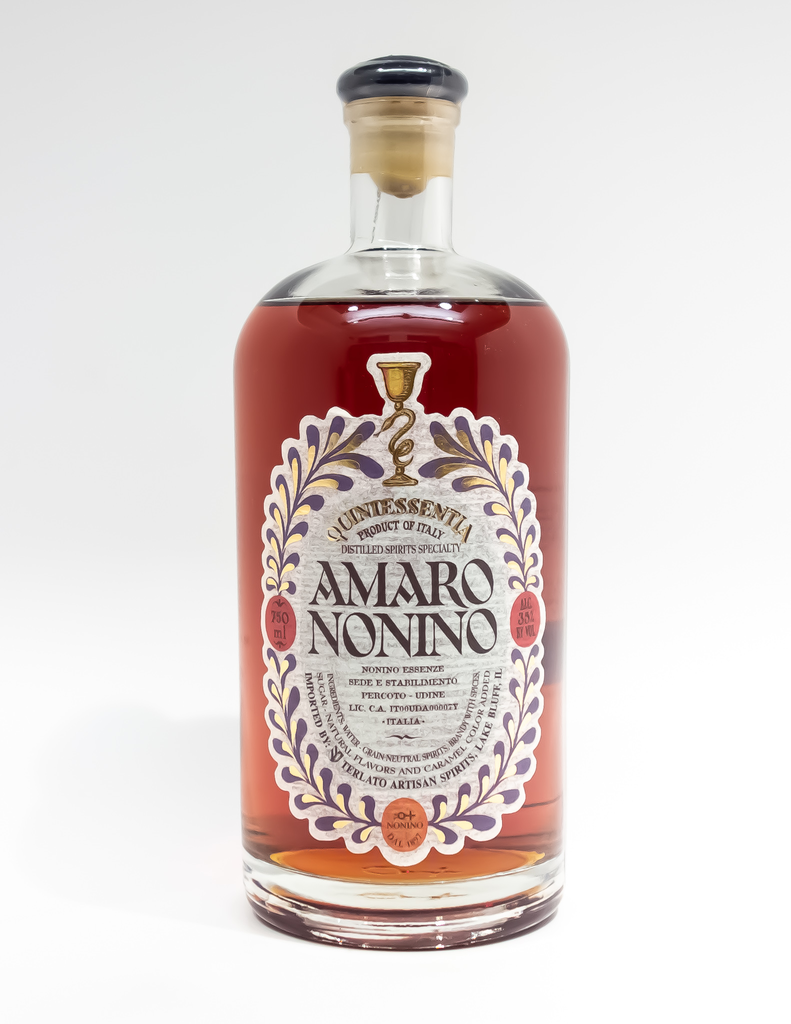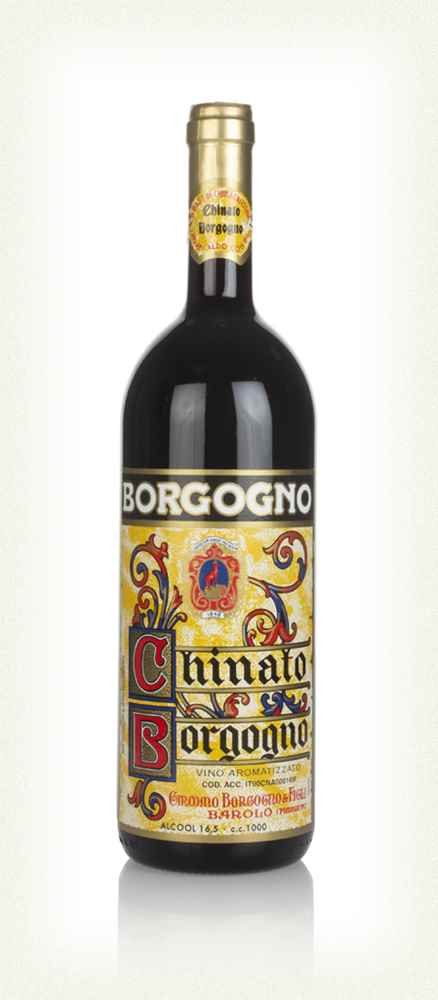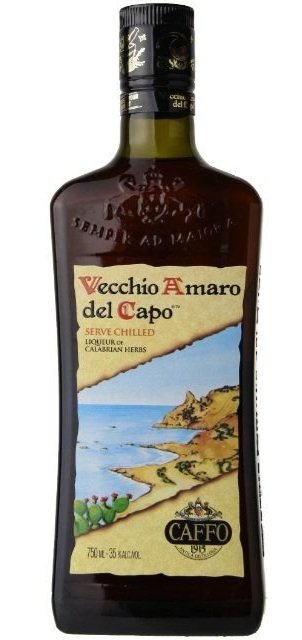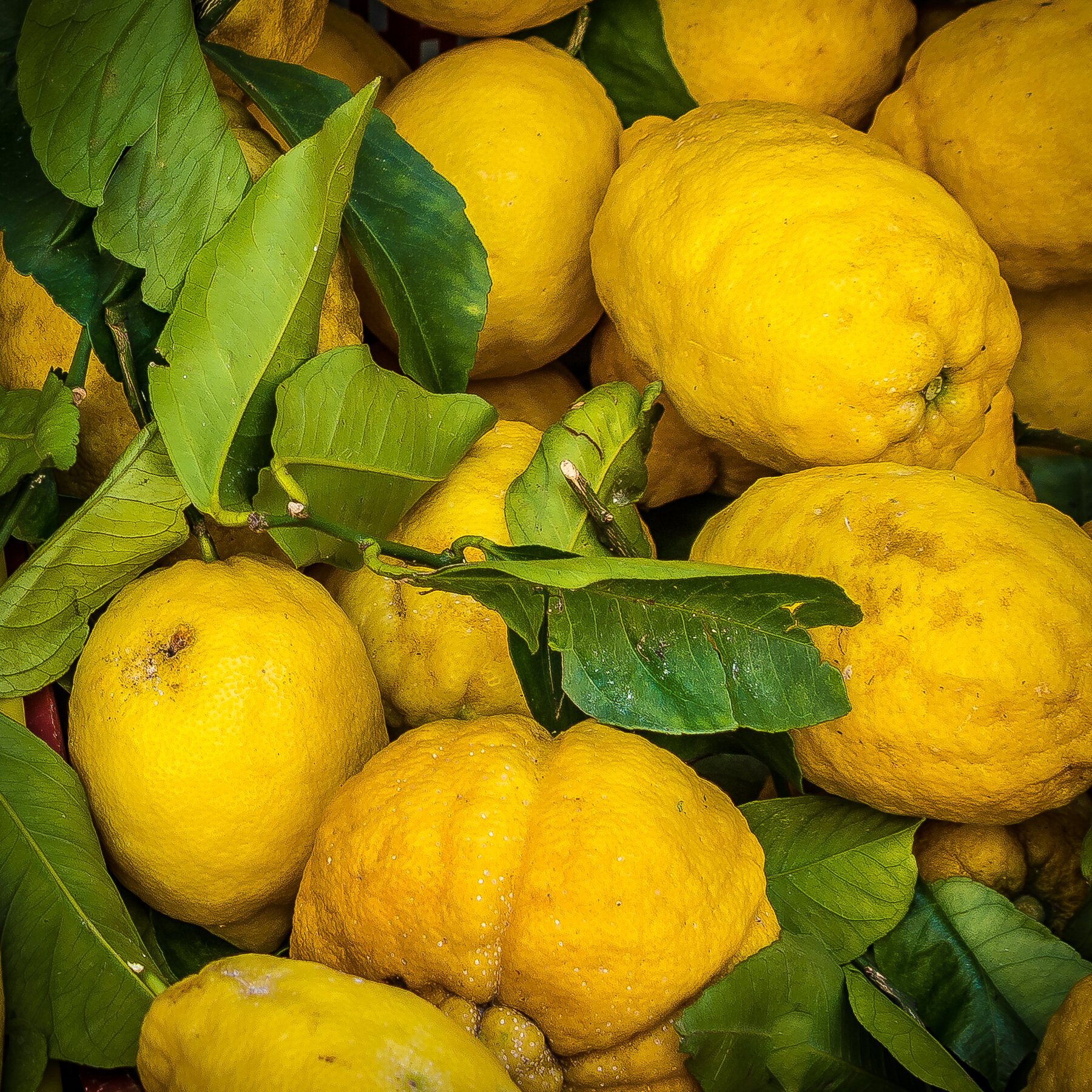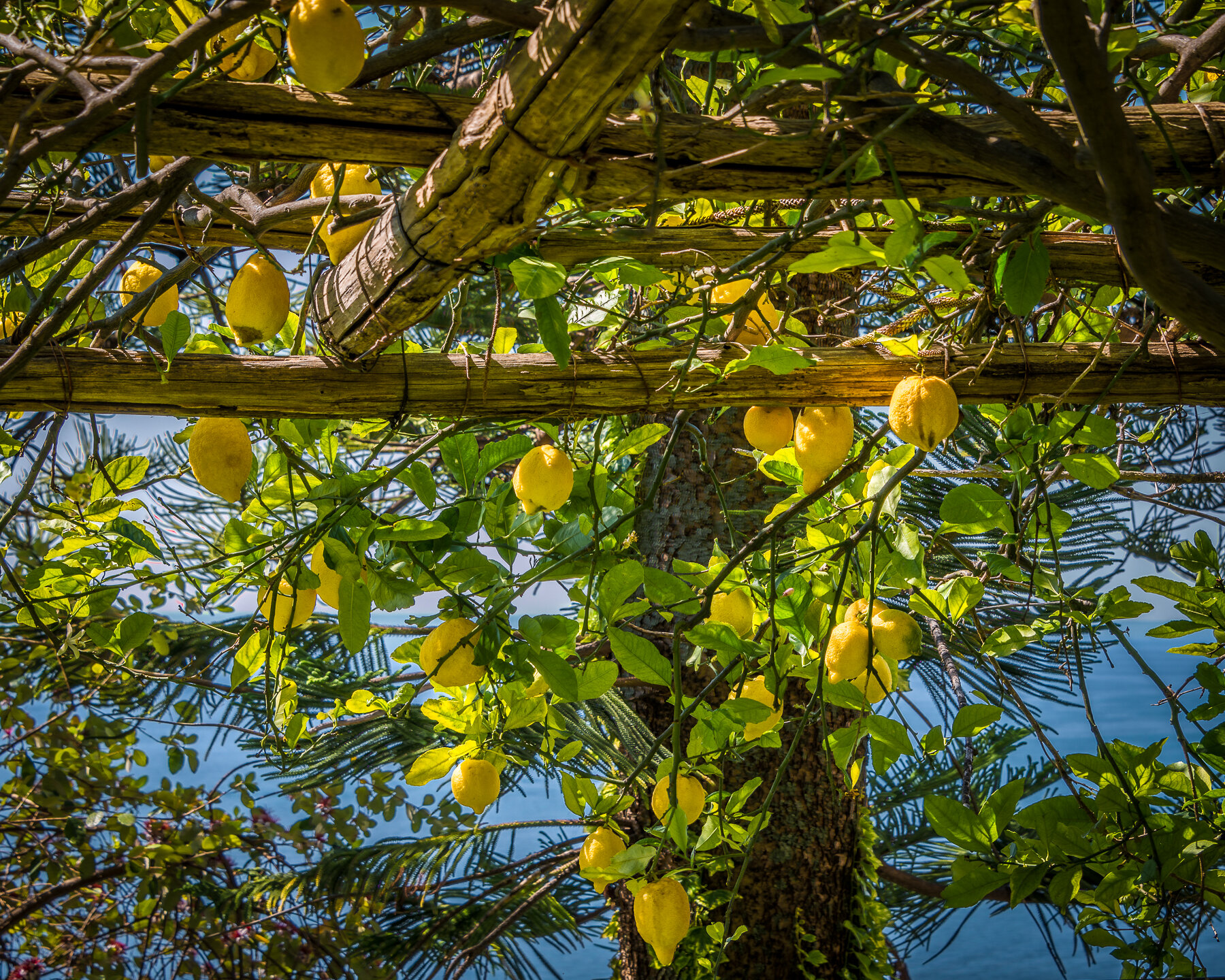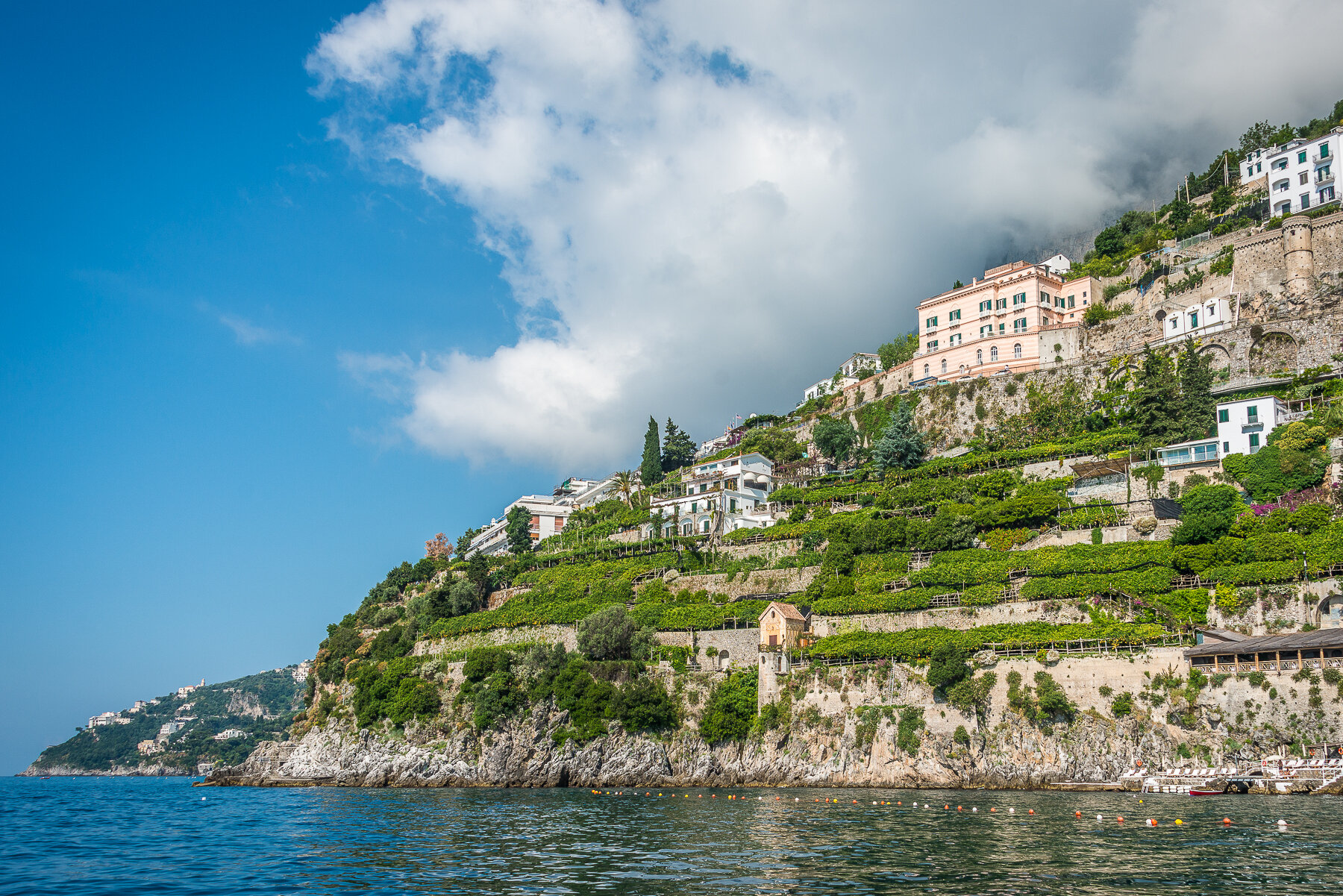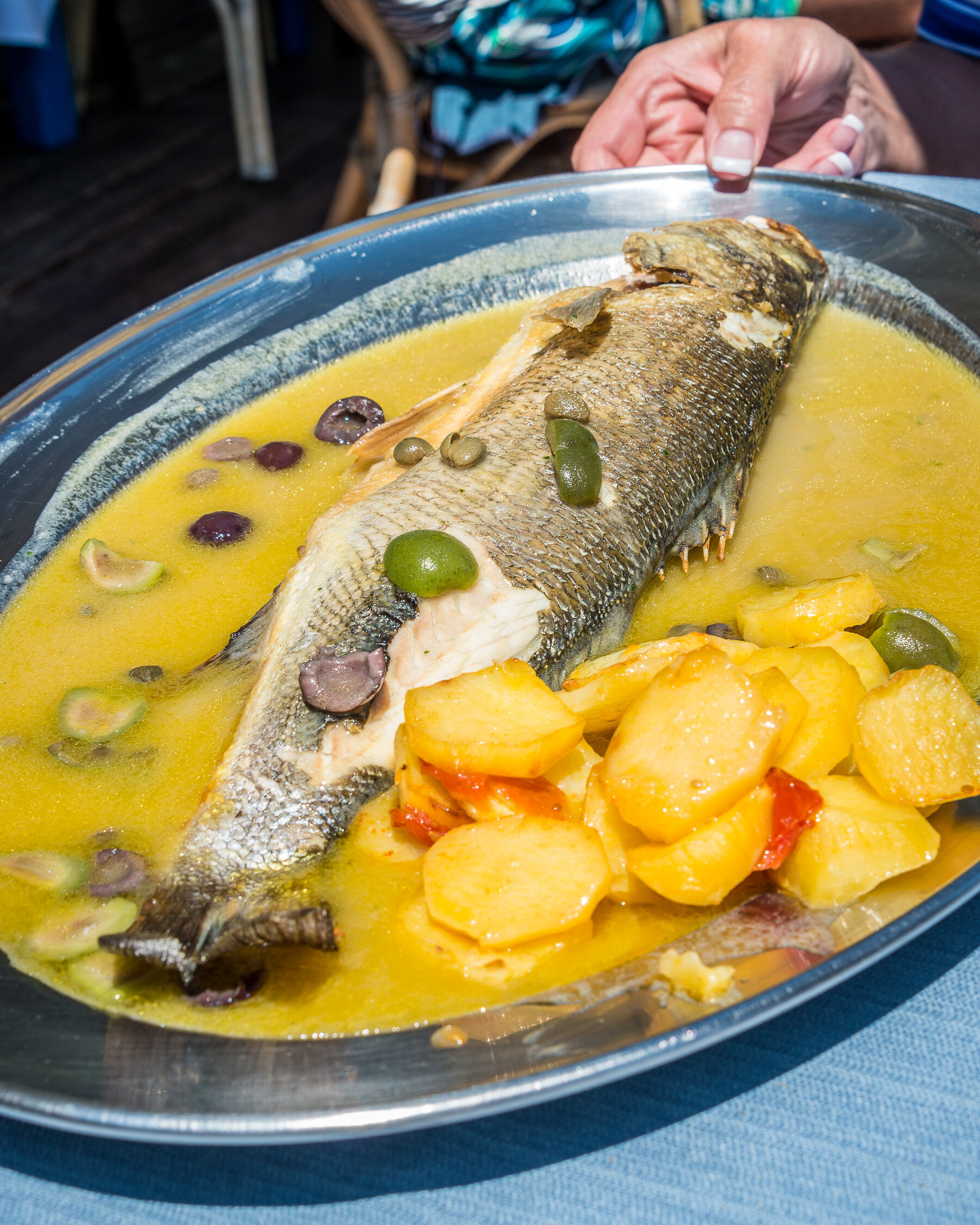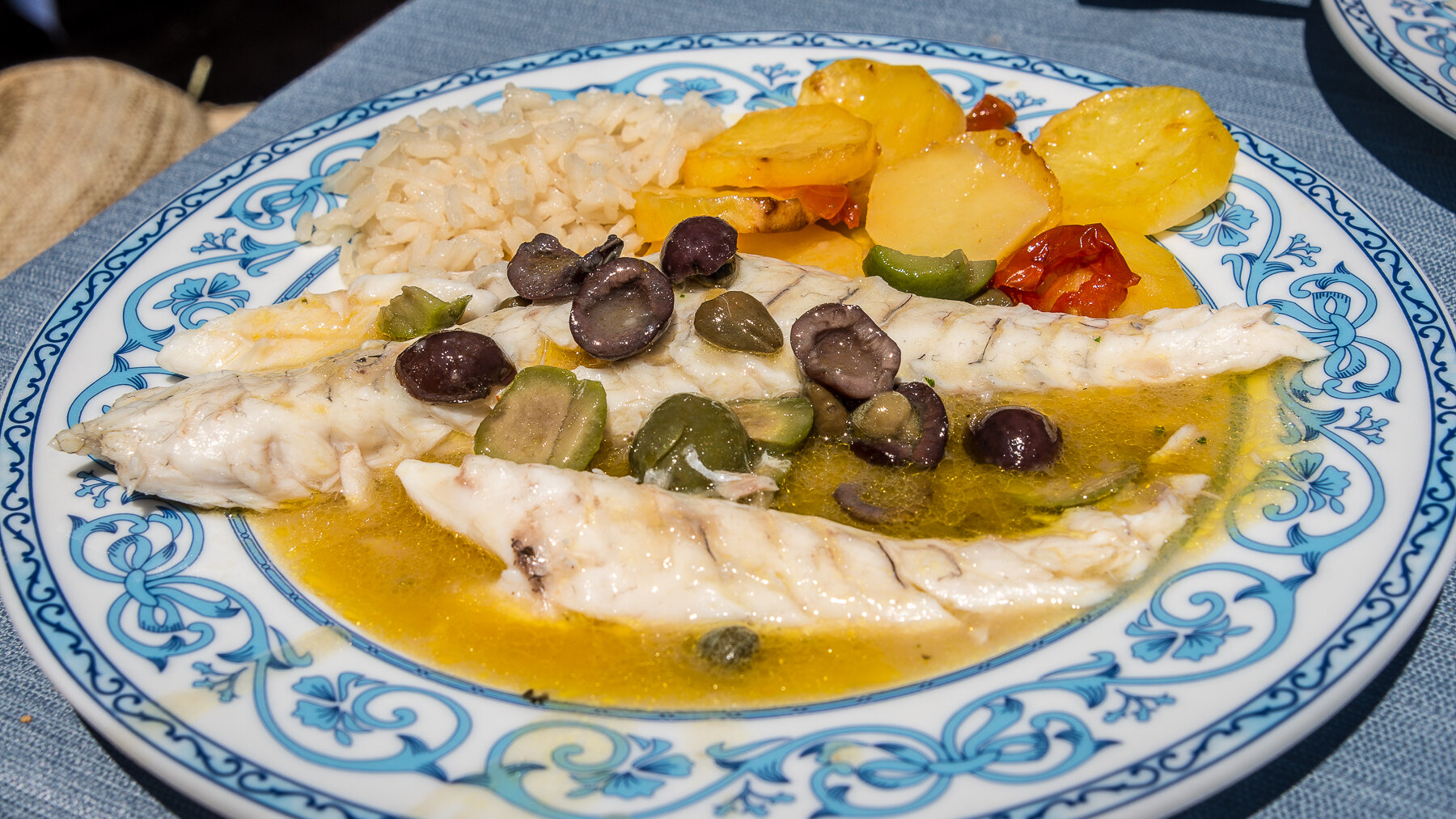I know, I know…you’ve been waiting for months to find out just what a Digestivo is…right?
Sorry it’s taken me so long to get this article out, but there was a reason. That would be a reason other than the fact that I’ve been doing other things involving Italy (like preparing for a trip there this fall), taking numerous domestic and foreign trips, breaking in a new RV, and dealing with both life and death issues. The truth is, my heart was just not into this particular subject, and I’ll tell you why as you read through this article.
The reason for the delay? I assembled several bottles of digestivi and compelled (aka “forced“) many of my friends to taste, and then rate, their experience…that took a good bit of time. Below, I will share the almost universally agreed upon rating results of these tastings. But please, read your way down to the bottom see those results.
What is a Digestivo?
What if there was a drink that you could enjoy after your Italian meal that would help with digesting that scrumptious experience? There is! At least, these liquids are claimed to accomplish this. But, do they?
The digestivo (digestivi is plural) is an alcoholic drink that one imbibes after a meal, typically dinner. It is believed to aid in digestion. Does it really?
Maybe a good bit of personal research would lead to the answer to, “Does it really?”. Read on…
Do you enjoy a caffé after your meal? Perhaps with your dolce (dessert)? The digestivo is served after that coffee. Some give the digestivo the name ‘ammazzacaffe’, which one could translate as ‘coffee killer’, as it gives you a more pleasant aftertaste than the caffé as you work your way back to your lodging. A more pleasant aftertaste than your coffee? Again, read on…
Up, or on the rocks? Definitely up…no ice. And served in a small shot glass. They are not typically used in a cocktail, but enjoyed alone, though crafty bartenders are working them into Italy-based cocktails these days. Though served up, some specify that they should be very cold…read the labels.
So, how do they taste? Some are a bit bitter, and these are called amaro (bitter…and amari for the plural) in Italian. To make an amaro, one gathers herbs, flowers, aromatic roots and bark, citrus peel, spices, and whatever. Then you infuse them into a grape brandy. Thus far, you would get a very bitter drink, so sugar syrup is added before bottling and aging. But not all digestivi are bitter. However, all are distinctively aromatic…i.e. they have a recognizable odor.
I’ve now tried nearly all of the amari discussed below. A somewhat typical amaro/bitter example is Branca Menta. This amari tastes very, very, very medicinal. In days gone by in Italy, that medicinal taste led folks to associate it with treating ailments from cholera to upset stomachs. As that habit developed, they decided to work that habit into an after dinner drink to accelerate digestion (and to sell more digestivi one would expect through marketing). Go figure. I mean, in small amounts, it can’t hurt, right? Let’s not work too much at understanding the merits of a digestivo…let’s just accept it as a time-honored Italian tradition to end one’s meal.
There are several varieties of digestivi; and each producer closely guards their secret recipes. And, these recipes are passed down from generation to generation. The only way to know whether you will like a particular digestivo is to try it. It is oh, so simple…right?
The Digestivi
Just below are typical digestivi that you will encounter wherever you dine in Italy:
Limoncello
This is probably the most popular and well known of the digestivi. And of all the digestivi shown below, it is my favorite. It is definitely not medicinal or bitter…just the opposite. And frankly, I’ve always thought of it as an after-dinner drink, without knowing that it was in the digestivo category.
Limoncello is made from lemons, alcohol, water, and sugar. You can see a make-at-home recipe HERE from Giada de Laurentiis.
In the photos below that we took along the Amalfi coast, you can see the ubiquitous lemon arbors terraced up the hills above the Mediterranean. Each of those arbors holds thousands of lemons, as you can see in the second photo taken from under one of those arbors and looking out at that beautiful Mediterranean. In Amalfi town, you have a chance to purchase these lemons (called sfusato), if you haven’t already picked some from a close-by arbor.
Though you and I would most likely just purchase a bottle of limoncello, many it Italy (and here in the US) make their own. And trust me when I say that no matter who has made their own limoncello, it is always “absolutely the best limoncello in Italy”. Our boat driver for One Fine Day, Gian Carlo, claimed that the best limoncello is made by his mamma.
Purchase your Limoncello and you often get a nice, shapely bottle thrown in, like these below.
Amaro Nonino
“Obtained from the union between Antonio Nonino’s ancient recipe and the experience of the Nonino family in the Art of distillation. Elegant, with an extraordinary scent of herbs, ennobled by ÙE® Nonino Grape Distillate aged in barriques.”
That quotation is directly from their website which you can see HERE.
Amaro Nonino’s creation is explained as: “In 1933 Antonio Nonino, a distiller by tradition, makes his passion for the best traditions of Friuli come true, creating through the art of alchemy infusions based on Grappa and herbs from Carnia. Drop by drop, Amaro Carnia is born.”
But then, in 1984 the family made a major change in the Amaro Nonino Carnia formula when grappa (as the base alcohol) was abandoned in place of a Nonino family creation called Grape Distillate ÙE®. Their own creation is made by distilling the skin, pulp and grape juice in a single operation. So, there you have it.
How does it taste on its own? One has described the taste as, “Scent of orange zest, bitter orange marmalade, thyme and menthol, with exotic notes like mango. Nice mix of sweet and bitter on the palate, perceptible pepper and licorice; cocoa aftertaste.” I’ll tell you what I thought below.
Modern mixologists have crafted cocktails from Amaro Nonino, like THAT’S AMARO!, which is Amaro Nonino, Ice, a slice of orange, all finished with sparkling wine at pleasure. Or, there’s the PAPER AIRPLANE, which is concocted with equal parts, Amaro Nonino, lemon juice, bourbon, and Aperol…all shaken, not stirred.
Here is something interesting…at least I think so. You know that I explained above that digestivi were considered to be medicinal? That is why their bottle looks rather like an old apothecary bottle.
Averna
“Since 1868, Amaro Averna has represented true Sicilian craft with a story rooted in heritage and tradition. Its recipe transmits the flavors and aromas of the land it comes from and has become a staple in every Italian home, passed down from generation to generation.”
Wow, that’s a pretty big statement in that quotation box when they say that Amaro Averna is a staple in every Italian home. But then, I’ve been in only one Italian home and the subject of Averna never came up, though we did have a nice Vin Santo…thank you Diana!
Their website (HERE - the introductory video is quite nice) is so poetic that I’ll let it speak for itself:
“In 1868, the recipe was gifted by the monk Fra Girolamo to the textile merchant Salvatori Averna as a token of gratitude for his commitment to the local community. He began producing it in his family farmhouse for guests and by the early 1900s the recipe and business were passed to Salvatori’s son Francesco who spread the word at fairs in Italy and abroad.”
The traditional recipe, unchanged since 1868, includes a lengthy infusion process, as most of the digestivi do. They say that, “The process begins by combining the specially selected herbs, roots and natural spices. Then all ingredients, such as pomegranates, and the essential oils of bitter oranges and lemons, are ground and lastly mixed and infused with pure alcohol for the intense aromatic blend. The liquid is then mixed with water and sugar until it reaches the right alcohol content, and is subsequently filtered and mixed with more of the same ingredients. The mixture is then left to stand until all the ingredients are thoroughly blended. Once the ideal intensity of taste and smell is reached, Verna is ready to be bottled and enjoyed.”
That’s fine and good, but how does it taste? It is said that it has a mouthcoating and bittersweet taste, carrying hints of orange and licorice, balanced with notes of myrtle, juniper berries, rosemary, and sage. “It stimulates the senses, instantly transporting you to the island of Sicily.” I would call that taste-a-portation at its best.
You know, as I wrote these descriptions, with the help of their own websites, I got a yearning to visit our local wine store to create a collection of digestivi. Which I did.
Chinato Borgogno
“Everything starts from an ancient and secret recipe of Casa Borgogno, which originates in the 1920s. ”
I’ve had a chinato before. It’s tasty. A friend served it up in a cocktail at the restaurant he managed. It turns out that there is not just one chinato, but several, each being produced by secret recipes. I’m focusing on this Chinato Borgogno because it is readily available, and it is very popular.
A word about the ‘chinato’ itself. ‘China’ [key-nah] in Italian refers to quinine from the Cinchona [cheen-konah] tree bark. If you are familiar with tonic water, it is quinine based and comes from the same tree bark.
As I’ve done with the previous digestivi, I’ll rely heavily on the producer’s websites, which universally suggest that their product is most excellent…obviously.
“Everything starts from an ancient and secret recipe of Casa Borgogno, which originates in the 1920s. We start with two wines, Langhe Nebbiolo DOC and Barbera d’Alba DOC, mixed up together. Meanwhile, in order to produce this aromatized wine, we create an infusion of 46 aromatic herbs (some grinded, some roughly broken-up, some othesr crumbled), that is put in maceration into hydro-alcoholic solutions, from 35 to 70 days. From the most common aromas such as vanilla, cloves, gentian, rhubarb, to the more uncommon sandal, cardamom, calamus, mace. We won’t reveal them all though… that’s a secret! Protagonist of this aromatized wine is obviously the quinine (China) from the Cinchona tree bark, of which we use two different varieties: Calisaya & Soccirubra.” There are, “Notes of cloves, nutmeg, cinnamon, cardamom, and bitter-sweet orange.”
I’ve found it to have a very pleasant, not-at-all bitter taste. Further, they say that “Cesare said that this is a ‘natural restorative’, something that restores strength, restores life… perfect!” So, if you want to be like Cesare and need some sort of life restoration, go with Chinato Borgogno.
Mirto de Sardegna
“The typical Sardinian liqueur is obtained exclusively from fresh Sardinian myrtle berries, harvested by skilled hands who know the impervious places of the island, where this spontaneous shrub grows, the fruit of which ripens inland and along the sunny and windy coasts of the island, exclusively on wild shrubs.”
Sardegna is that island off the western coast of Italy. It’s not a little island, oh no. It is big. And it’s not just a short boat ride from the Italian mainland. In fact, its almost exactly 150 miles from that mainland. Think of it as an 8-hour ferry ride.
Rather than act like I know all about it by putting things in my own words, I’ll let the Zedda Piras website speak for itself…and by the way, they are part of the Campari Group now.
“Passion, experience and care are the authentic and genuine values that guide Mirto Zedda Piras, a house founded in 1854, produced in Sardinia in Alghero following the traditional recipe: only water, sugar, alcohol and wild Sardinian myrtle berries.
The harvest of myrtle begins in November, a centuries-old, unique and precious tradition - like its homeland, Sardinia - which is renewed year after year to create Mirto Zedda Piras. The typical Sardinian liqueur is obtained exclusively from fresh Sardinian myrtle berries, harvested by skilled hands who know the impervious places of the island, where this spontaneous shrub grows, the fruit of which ripens inland and along the sunny and windy coasts of the island, exclusively on wild shrubs.
Produced in Alghero, Mirto Zedda Piras takes its intriguing character from wild berries picked when ripe and left to macerate in alcohol. The small purplish blue fruits, which dot the Sardinian landscape with the arrival of winter, characterize its color and taste. Thus was born a genuine liqueur, with an intense color and the characteristic scent of Mediterranean scrub.
Perfect at the end of the meal, it best expresses its characteristics served iced and in slightly frosted glasses. Ideal for any occasion, it brings with it the flavor and aromas of Sardinia spread by the Mistral wind and recalls the carefree atmosphere of dinners in company.”
Pretend I just came up with all of that on my own, please.
Sambuca
Finally, here is a digestivo with which I am very familiar…Sambuca. I’ll have to rely less on a distillar’s website for this one.
Licorice! If you don’t like licorice, you won’t like Sambuca.
If you’ve tried slivowitz, ouzo, pernod, anisette, Jägermeister or pastis you’ve experienced a similar taste…though I would have to say that those are a bit more severe…Sambuca is much more subtle, in my opinion.
If you buy Sambuca, don’t forget to have a sip occasionally. I had neglected my bottle of Sambuca for a bit. When friend Scott and I were about to have a sip, it had crystallized and the taste was very much off.
Branca Menta
I mentioned Branca Menta above in an introductory paragraph. I don’t want to even talk about this one, but I feel that I have to give you the scoop based on others’ input.
One online site suggests “Branca Menta is a minty Italian Amaro [that] is based on the original recipe of Fernet Branca and is a refreshing herbal liqueur. Branca Menta [has] a delicate minty note”. I am incredulous that they use the words ‘refreshing’ and ‘delicate’ and ‘minty’ to describe the taste. Maybe my taste buds have been twisted around by a lingering Covid. Maybe. But, maybe not.
The Branca Menta website cries out that it is “a product that surprises its consumers and aficionados with its ‘thrill of intense pleasure’ at every sip.'“ They cry out…I just cry.
I know you want to prove me wrong, so go ahead and give it a try. Maybe make…”the irresistible Mintonic cocktail… muddled lime, a spoonful of brown sugar and mint leaves add crushed ice, pour 1/5 Brancamenta and 4/5 of tonic water and garnish with mint leaves.”
I’ll wait to hear from you.
Liqueur Strega
Strega Liqueur (Liquore Strega) is an herbal Italian liqueur that I’ve purchased and tasted. It has a distinctive bright yellow color. It's a digestivo made from a secret recipe (obviously…otherwise we could all make it…right?) that includes about 70 botanicals. It is produced in the town of Benevento, Italy, where ‘bene vento’ means ‘good wind’.
As the word ‘strega’ translates to ‘witch’, it is known as ‘the witch’s liquor’. I envision those witches gathered around the caldron about 30 miles northeast of Napoli (Naples to us), as they mix up a concoction of eye of newt and tongue of snake and such (again, one of those secret potions that we just can’t seem to duplicate) whilst they enjoy a gentle and refreshing breeze. But hey, those witch’s are spot on…this one isn’t half bad. I’ve purchased it and I liked it.
It began production in 1860, and that distinctive yellow color comes from the presence of saffron, of all things. Bottled at 80 proof, it has an alcohol content comparable to most hard liquors. Among its approximately 70 herbal ingredients are mint, fennel, juniper, cinnamon, and obviously a bunch more herbs and spices.
I’ve said it before and I’ll say it again, I just love reading marketing and promotional literature created by Italians. They have such a way with words! Here is an excellent example from the Liquore Strega website. “The production process begins with the milling of about 70 herbs and spices, characterized by special aromatic properties, imported from all over the world and selected with great skill. Among them we can mention: the cinnamon of Ceylon, the Iride Fiorentino, the juniper of the Italian Apennines, the mint of Sannio, which grows spontaneously along the rivers of the region. Its characteristic yellow color comes from the addition of the precious saffron to the distillate of aromatic herbs. The liqueur Strega, is aged for a long time in ash barrels in order to assimilate an expressive breadth and elegance of the bouquet as an expression of many different aromas originating a liqueur obtained by distillation of the aromatic component, from the alcohol content of 40% vol. It is only after completion of this maturation that the liqueur is bottled and distributed throughout the world.”
You enjoyed that didn’t you? I know you did.
I am going to do my best to find something in my everyday life where I can say that it assimilates an expressive breadth and elegance of the bouquet as an expression of many different aromas. And, I challenge you to do the same. For me, maybe bacon. Yes, definitely bacon!!!
Vecchio Amaro del Capo
I’m a bit stumped by the name of this digestivo. If my translator is correct, it seems to mean ‘bitter old boss’, but maybe it’s lost in translation. Ask yourself, “Why was the boss bitter?”.
This is also one that I’ve tried. I’ll recount that experience a bit later. In the meantime, let’s go to the Capo website to see what it has to say. Let’s break it down…
First, “Vecchio Amaro del Capo is at its best when enjoyed icy cold. At a temperature of -20°C, mint, anise, liquorice and all herbs included in its exclusive recipe become stronger, giving body and taste to a truly unique pleasure.” Ok, we have herbs that are pretty strong at room temp getting even stronger when it’s icy cold. And -4°F must be the optimal temperature for unique pleasure. Let’s move on…
“Each one of the herbs used to produce Vecchio Amaro del Capo has a specific harvesting time. This is why they are harvested one by one during the course of the year.” I couldn’t agree more that it is best to harvest the herbs at specific times during the year. And one-by-one makes a lot of sense. But wait, there’s more…
“All the macerations and infusions take place immediately at the time of harvesting, to capture the freshest aromas and keep intact the organoleptic properties of each ingredient.” I know that I’ve certainly had a hard time with my own organoleptic properties, so reading that has made the time it took to read it well worth that time. And finally…
“Vecchio Amaro del Capo is the most famous liquor produced by Distillerie Caffo. It is the result of a century of experience, hard work, scrupulousness and passion. Over the years, the most prestigious juries in the world have recognized its uniqueness.” I would definitely not want to be seen sipping a liquor that was made with unscrupulousness and in a dispassionate way.
The Results are In!
So, you want to know how wonderful these digestivi taste, don’t you? Well, I was going to say that “you’ve come to the right place” but there must be something seriously flawed with my taste buds. Reading the web literature above, they must all be magnificent, but I just don’t get it.
All of the 15 or so guinea pigs that I challenged to taste and rate these nine digestivi have come to the same general conclusions in their taste ratings. Below are the results, with the most popular first, and the least popular at the end:
Universally, all agree that Limoncello is delightful, though a few said it was a bit on the cloyingly sweet side. But, the fact that you can easily make your own means that you can cut back on the amount of sweetness invested in its preparation. Amalfi is the home of Limoncello, so my next quest there will be to find a Limoncello tasting adventure to find “…the very best in all of Italy”.
For those who enjoy the flavor of licorice, Sambuca was very popular. I had never thought of it as a digestivo, though I’d enjoyed it after a meal whenever Nelya was given permission to bring me a taste…though it was evidently often to be found in “Milo’s truck”.
Strega was well received. It was not offensive to any of my tasters.
About one-half found Chinato Borgogno to have a nice taste. It did not verge on the amaro (bitter) digestivo. And, it has the added benefit of helping you to meet your daily requirements for quinine!
Now, we move to the digestivi with a more bitter and medicinal taste:
I found the least offensive taste to come from the Averna…but it was still medicinally flavored.
The Bitter Old Boss (aka Vecchio Amaro del Capo) convinced me that she was bitter because she was required to drink it on the job. Did you ever have a performance review where you were dinged because you didn’t drink enough at work…I certainly hope not.
Near the bottom of the list is Amaro Nonino. But with their marketing by use of an apothecary bottle, at least you are forewarned.
The least favorite is Branca Menta. No grazie!
I’m sorry to say (I think!) that I was not able to find the Mirto de Sardegna in any of our liqueur stores; however, as aforementioned, we will be in Italy this fall and I’ll seek out a taste so I can report back to you.
Ok, that’s it for the final installment of Eating in Italy. Here is the complete list of articles concerning this super fun pastime.
and of course today’s article, which you are already reading: Eating in Italy: Digestivi









